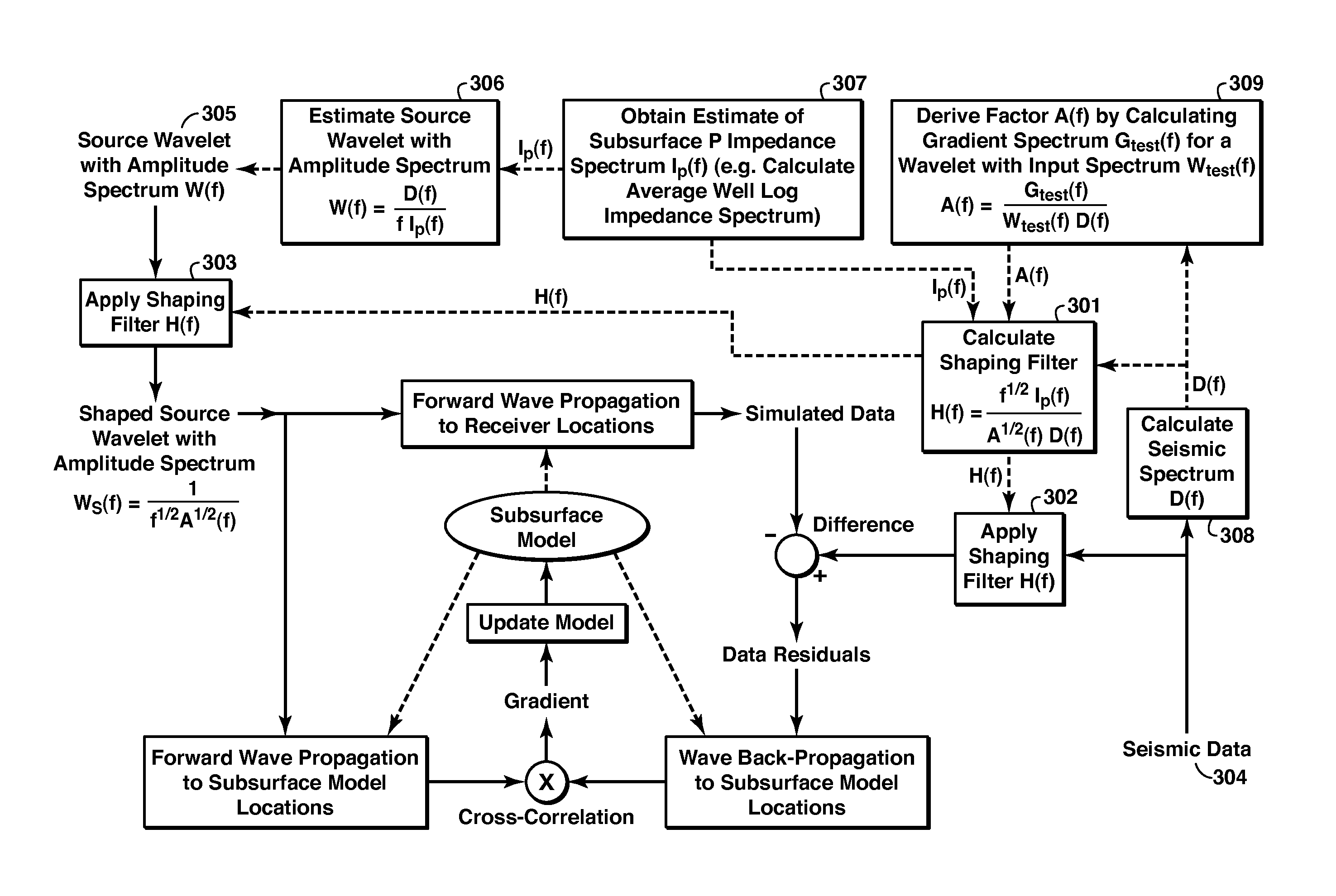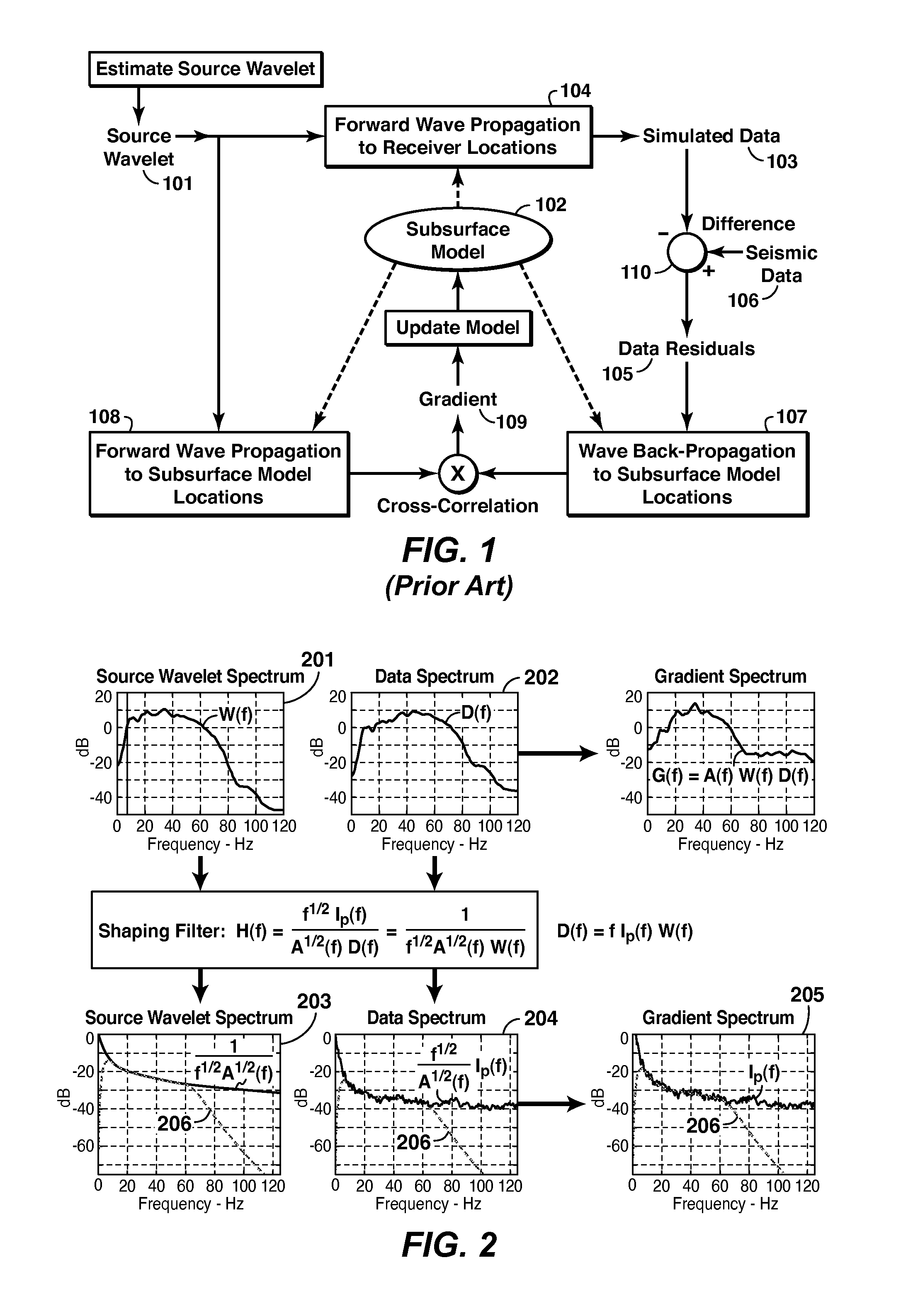Convergence Rate of FUll Wavefield Inversion Using Spectral Shaping
a spectral shaping and wavefield technology, applied in the field of geophysical prospecting, can solve the problems of high computational cost, high cost of global optimization methods, and high computational cost of iterative inversion, and achieve the effect of reducing misfi
- Summary
- Abstract
- Description
- Claims
- Application Information
AI Technical Summary
Benefits of technology
Problems solved by technology
Method used
Image
Examples
examples
[0049]An example illustrating how the Full Wavefield Inversion process can be very slow to converge is shown in FIGS. 6, 7 and 8, illustrating the convergence behavior for a small-size 2D problem. Some of the plots present in all three figures are the cumulative model update (601, 701, 801), a simulated shot gather (602, 702, 802) and the data residual for this gather (603, 703, 803), and a comparison of the frequency spectra for real (604, 704, 804) and simulated (605, 705, 805) shot gathers. After 10 inversion iterations (FIG. 6) there is still considerable mismatch between the real and synthetic data, as is evident from an inspection of the data residuals (603) and gather spectra (604, 605). The match has considerably improved after 50 iterations (FIG. 7), but inspection of the spectra (704, 705) reveals that there are still differences for the lower frequencies. It takes about 100 iterations (FIG. 8) to reach a more complete match and, even then, there are still differences in t...
PUM
 Login to View More
Login to View More Abstract
Description
Claims
Application Information
 Login to View More
Login to View More - R&D
- Intellectual Property
- Life Sciences
- Materials
- Tech Scout
- Unparalleled Data Quality
- Higher Quality Content
- 60% Fewer Hallucinations
Browse by: Latest US Patents, China's latest patents, Technical Efficacy Thesaurus, Application Domain, Technology Topic, Popular Technical Reports.
© 2025 PatSnap. All rights reserved.Legal|Privacy policy|Modern Slavery Act Transparency Statement|Sitemap|About US| Contact US: help@patsnap.com



